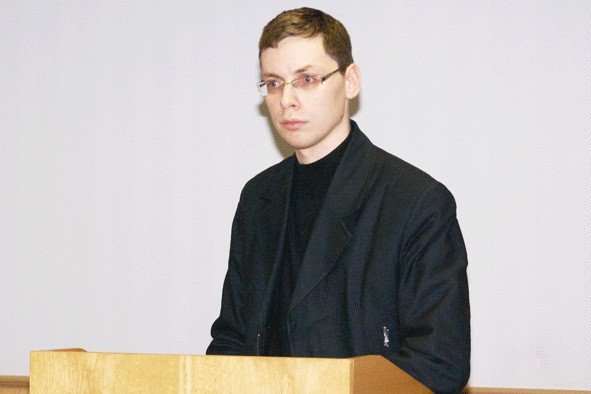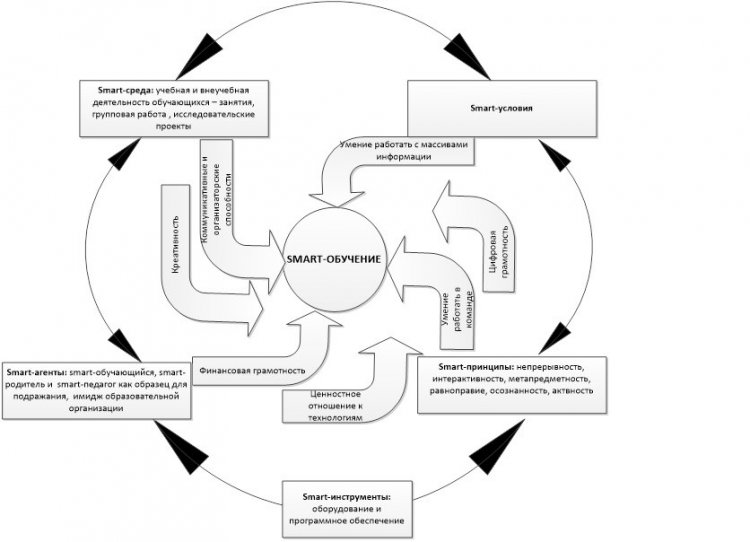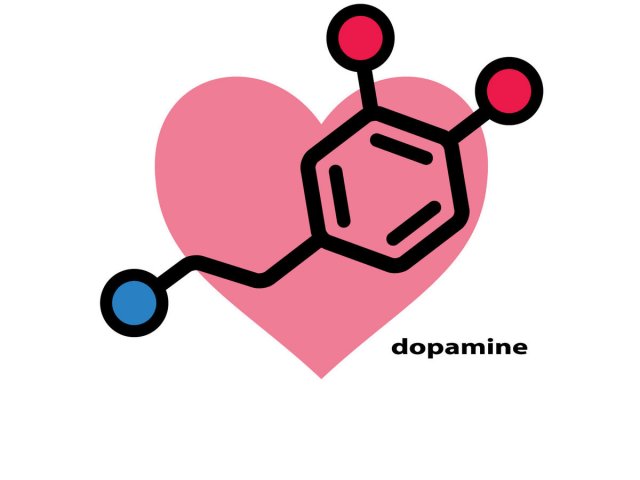Scientists of VolRC RAS (Vologda) are searching for ways to form smart competences that will help a modern person become a sought-after and competitive specialist in the labor market. The introduction of smart education should facilitate professional self-determination and personal adaptation in a rapidly changing society in the age of technological innovation
The latest technologies and digitalization of socio-cultural space today require the introduction of promising means and forms of innovative learning. Modernization in production, medicine, agriculture, politics, and economy has caused the need to form a new human resource potential. Therefore, it becomes necessary to develop and implement new professional programs or promising approaches that form digital literacy and smart competences in the educational system.
Vologda scientists are conducting research within the framework of the project under the RFBR grant “Smart Education as a Vector of Development of Human Potential of the Young Generation” (2019-2021). The specialists presented their original theoretical and experimental models to study the possibilities of competence development in the educational environment. For example, they proposed approaches to determining the composition of smart competences and created tools for their diagnostics.
Maksim Aleksandrovich Golovchin – Candidate of Economic Sciences, Senior Researcher of the Laboratory for the Studies of Labor Potential Development Issues of the Federal Budgetary Scientific Institution Vologda Scientific Center of the Russian Academy of Sciences (VolRC RAS)
Maksim Aleksandrovich Golovchin, Project leader, Candidate of Economic Sciences, Senior Researcher of the Laboratory for the Studies of Labor Potential Development Issues of the Federal Budgetary Scientific Institution Vologda Scientific Center of the Russian Academy of Sciences (VolRC RAS) (Vologda) told what smart competences are and how they can help form a new type of employee in the digital economy, why it is necessary to form a set of smart competences in the young generation at the level of school education, and what the preliminary approbation results of the VolRC RAS scientific team methodology are.
Our existence in the digital space requires modern people to be competent in smart technologies. It opens up great opportunities for interaction in professional network communities, contributes to effective socialization and further self-realization.
According to Maksim Golovchin, the transformation of views on the development of personal professional competences in the information and smart society “is connected with the active practice of the surrounding world transformation by human. As recently as yesterday, we had one type of professions in demand, now we have others. For example, the Atlas of Future Professions (compiled by the Agency for Strategic Initiatives) no longer includes the familiar types of work activities, such as engineers or teachers, but instead includes ecoanalysts, smart-environment simulators, moderators, and tutors. Thus, the requirements for the professions change, too. The core of competencies of a “new-type” employee is creative understanding of their duties, the ability to perceive new information, a high level of accumulated qualification, flexible skills (autonomy, adaptability, mobility, competitiveness, proactivity). The formation of these competences in future specialists is the real challenge for the modern education system.”
In the research field, the concept of “smart competences” is an immature and understudied phenomenon. Theorists look at it from the standpoint of developing universal and professional competences.
The Vologda scientist outlined the prevailing approaches to the study of smart competence as a phenomenon of modern society:
“There are several approaches. The traditional approach is the most popular in Russia and abroad. It proposes to assess smart competences using classical pedagogical measurement materials (tests, control cards, simulators). We can say that this approach is fully represented in the Unified State Exam. The second (technological) approach is a more modern one. It is based on the use of alternative means of assessment – observation, content analysis, interviews, conversations, questionnaires, diagnostics, portfolios, projects, case studies, etc. Alternative means often involve qualitative and subjective scaling, self-assessment, expert review. In our study, we implement the experimental work, focusing on the technological approach.”
What theory do you follow?
“The original diagnostic test was chosen as an assessment tool. The test itself consists of several thematic blocks:
1) digital literacy: the level of knowledge in manipulating and creating computer programs, accounts, web pages; knowledge of programming languages and mobile tools; personal attitude toward various practices of behavior on the Internet (Internet bullying, personal data processing, conflicts in social networks, etc.);
2) financial literacy: the level of awareness in matters of money use, financial security, banking operations; participation in personal and family budgeting, planning expenses, opening a bank account, the use of non-cash funds; models of saving behavior, etc.;
3) research (project) competence: personal participation in research; interest in scientific activity and its manifestations; time spent on research activities, etc.;
4) communicative competence: the nature of communication with the immediate environment;
5) organizational abilities, the ability to work in a team: the nature of relations with peers; the desired and realized role in team activity (leader, executor, initiator), etc.
The test contains questions on the self-assessment of the presence/absence of basic and flexible skills (what the technological approach provides for).
In the course of interpretation, the self-assessment data are digitized in the form of indices and clustered according to the levels of mastery of the assessed competencies,” Maksim Golovchin reported.
What is included in the concept of personal smart competences and what, in your opinion, causes the need to form a set of smart competences in the young generation at the level of school education?
“Smart competences are the competences of the 21st century, i.e., modern paraprofessional skills and values and goals. These include digital literacy (literacy in using new technologies); value attitude toward modern technologies and Internet practices (level of trust in virtual environment, attitude toward Internet bullying, etc.); financial literacy (knowledge of finance, personal savings and ability to manage them); research literacy (ability to work with information arrays); creativity (ability to think creatively); communication and organizational skills; ability to work in a team. It is important not to miss the moment and to form such competences at the level of school education in order to create a basis for adaptation to the requirements of new professions and specialties in colleges and universities,” the young scientist explained the concept.
Specialists of VolRC RAS believe that under the conditions of digitalization and developing advanced technologies in modern society, it is necessary to educate a new type of intellectual worker who combines their work with continuous learning and creativity (including in the information field) in the mode of self-development.
According to Golovchin, “the older generation, like the digital generation (generation Z), successfully embraces new technologies, but does it in their own way. Adults have a too pronounced emotional perception of the process of mastering IT, which much more often leads to stress, addiction, and netoholism. The younger generation is characterized by aloofness and coldness. The Internet is in many ways a habitat for them. Therefore, we can agree with the opinion that the older generation may remain an immigrant to the information world. The formation of smart competences does not necessarily negate the schemes and tools of the classical school. On the contrary, they are formed in response to the challenges of time by means of a complex interaction of traditional and innovative forms and practices of learning.”
Vologda researchers have developed a theoretical model to understand what knowledge, skills, and values can be combined into the category of “smart competences.”
“The outer circle of the model includes such clusters as smart environment and its tools, smart conditions, smart principles, objects of meta-influence (image of an educational organization and smart agents). The internal one includes smart competences that are formed due to cluster interaction. The model is based on smart learning – a process that combines all the available pedagogical and psychological theories with the practices of electronic technologies,” Golovchin specified.
The model of smart competences formation.
In addition, the scientists presented an original multidimensional model of the student that will take into account the individual differences of students depending on the level of smart competences formation.
“Within the framework of the model, based on O. Y. Svergun's approach, we distinguished three levels of possible mastery of smart competences: basic, autonomous, and strategic. The basic level is sufficient for participation in the learning process, but students may have difficulties in performing various educational tasks and communicating with others. If the student possesses smart competences at the autonomous level, they can perform educational tasks independently, use software and basic financial products; establish cause-and-effect relations without any assistance; show the need for communication situationally. Strategic (leadership) level reflects the ability to influence peers, set ambitious goals and achieve them, easily adapt to the conditions of the modern world,” Maksim Golovchin explained.
The original methodology of VolRC RAS employees is also aimed at determining the level of smart competences directly in the process of their formation.
“We plan to organize several measurements. At the first stage (September-October 2020), we identified the initial level of smart competence proficiency of the subjects (students of 9-10 grades) in the control and experimental groups. During the second stage (October 2020-May 2021), we will only involve the experimental group in the project; the control group will receive smart competencies in a free-form mode. During this period, the experimental site of the Science and Education Center will be used to influence the formation of smart competencies in the experimental group. During the third (final) stage of the experiment, we will measure the level of smart competences development for the second time and determine in which environment they are formed better. In a controlled (specially created) or uncontrolled (free development) environment,” the scientist notes.
It is compiled by the author's team based on the first measurement (September-October 2020) results.
The experimental site for the study is schools in Vologda (Vologda Region) and Staraya Russa (Novgorod Region), as well as in the Scientific and Educational Center of VolRC RAS (Vologda). The test subjects are students in grades 9-10 (a total of 76 people). The control group – students of a regular secondary school; the experimental group – students of a regular secondary school, who receive additional training in 2020/21 academic year in the Scientific-Educational Center of VolRC RAS (academic class, all-city elective). An online diagnostic test developed by the project team was used as an assessment tool.
What is the current assessment of the level of smart competence formation in groups of schoolchildren?
“So far, we have conducted the first stage of the study. We measured the initial level of mastery of smart competencies in all groups. The starting abilities appeared to be approximately the same in all groups; this will allow us to draw valid conclusions in the future. Most of the subjects (about 90%) of the experimental group have smart competences at the autonomous level. Our task is to bring this level up to the strategic one by May 2021,” the researcher specified.
What are your methodological recommendations for the widespread implementation of the smart competencies model for the education of a new type of employee focused on technical creativity and a creative attitude to the duties performed?
“The final suggestions will allow us to formulate the results of the experimental phase that will take place this year. Hypothetically, we assume that the provided forming influence will allow the experimental group, unlike all others, to achieve a strategic level of smart competence mastery. Thus, the experience of the Scientific and Educational Center as an experimental site can be applied as a leading edge in other educational organizations. We have already planned to create a scientific and methodological collection with recommendations for our colleagues from other regions based on the results of our work,” project manager Maksim Golovchin said.
It is obvious that in the conditions of smart society new forms of interaction for knowledge acquisition are actualized, and there is a need to raise the issue of advanced functional models for training potential employees with universal skills required to solve high-level tasks.
Photo slide
























